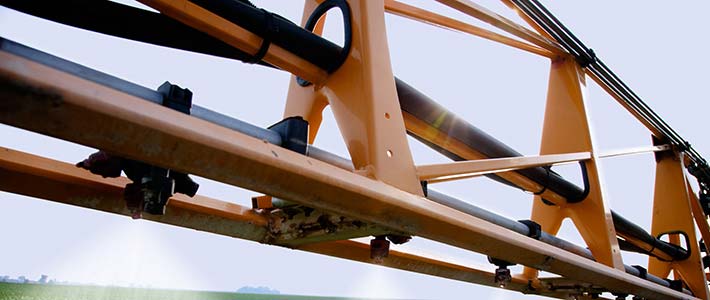This article is written by David Kee, research director for the Minnesota Soybean Research & Promotion Council (MSR&PC). He can be reached at dkee@mnsoybean.com or 507-388-1635.
Last week I had a question about using generic dicamba pre-plant for dicamba tolerant soybeans. There are multiple legal cases documenting the illegal use of generic dicamba over the top of dicamba tolerant soybeans. Minnesota also has a long history of using generic dicamba as a pre-plant burndown with a rate-dependent waiting period for standard soybeans.
After reading several dicamba labels, I posed a question about using dicamba as a burndown prior to planting soybeans.
If a farmer is using dicamba tolerant soybeans, do the waiting intervals (period between herbicide application and date of planting) listed on the “generic” dicamba product labels still apply because these soybeans did not experience crop injury?
Searching for an answer, I emailed the professionals at the Minnesota Department of Agriculture. Research Scientist Gurinderbir Chahal, Ph.D., responded below:
Hi David,
 Yes, after generic dicamba product (for example, Clarity) application, applicators have to follow the waiting intervals for the planting of dicamba-tolerant (DT) soybeans. For example, if a farmer is using generic dicamba products like Clarity for preplant application, he has to observe a minimum accumulation of 1” rainfall or overhead irrigation, a waiting period of 14 days for 8 fl ozs/A or less, and 28 days for 16 fl ozs/A following application (below is screen shot from Clarity label). The reason is labels of generic dicamba products do not have DT soybeans on the label.
Yes, after generic dicamba product (for example, Clarity) application, applicators have to follow the waiting intervals for the planting of dicamba-tolerant (DT) soybeans. For example, if a farmer is using generic dicamba products like Clarity for preplant application, he has to observe a minimum accumulation of 1” rainfall or overhead irrigation, a waiting period of 14 days for 8 fl ozs/A or less, and 28 days for 16 fl ozs/A following application (below is screen shot from Clarity label). The reason is labels of generic dicamba products do not have DT soybeans on the label.
 For all restricted use pesticide dicamba products, Engenia, XtendiMax, FeXapan, and Tavium, there is no waiting period for dicamba-tolerant soybeans. For non-DT soybeans, the waiting period varies with application rate of all RUP dicamba products except for Tavium, it has a waiting period of 28 days before planting non DT soybeans (see screenshot from Engenia label). Also, for non DT soybeans, a minimum accumulation of 1 inch rainfall or overhead irrigation should be observed followed by dicamba application.
For all restricted use pesticide dicamba products, Engenia, XtendiMax, FeXapan, and Tavium, there is no waiting period for dicamba-tolerant soybeans. For non-DT soybeans, the waiting period varies with application rate of all RUP dicamba products except for Tavium, it has a waiting period of 28 days before planting non DT soybeans (see screenshot from Engenia label). Also, for non DT soybeans, a minimum accumulation of 1 inch rainfall or overhead irrigation should be observed followed by dicamba application.
There you have it. A farmer can use generic dicamba pre-plant to dicamba tolerant soybeans, but still must abide by the rate dependent waiting window. One can also use dicamba for dicamba tolerant soybean, pre-plant, without a waiting period. Which brings us full circle yet again: read and follow label directions.







